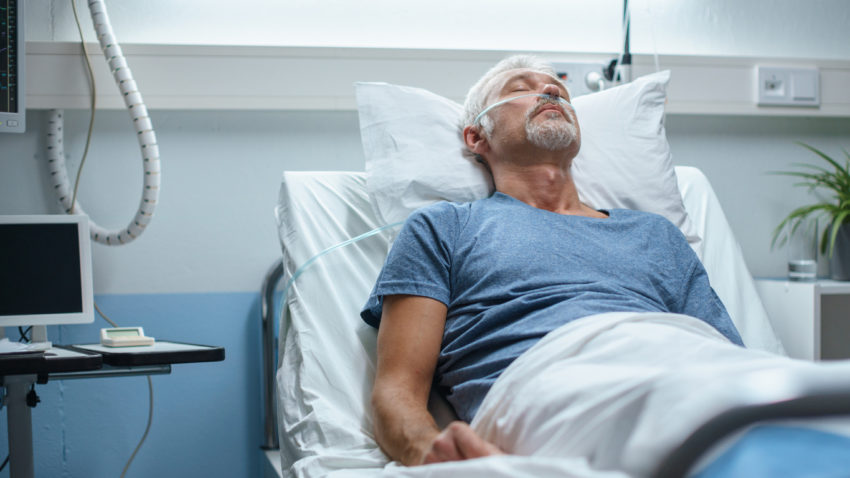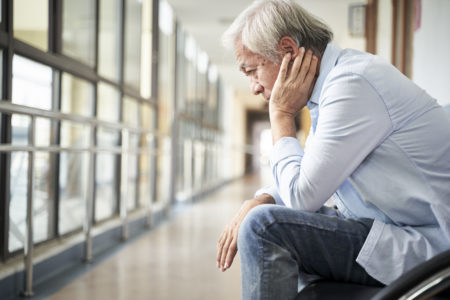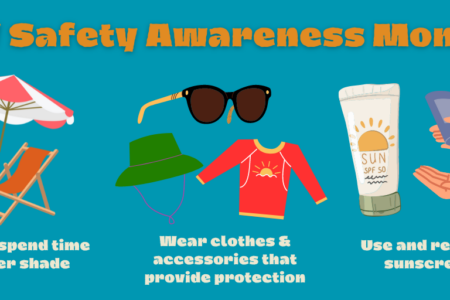
Share On Social!
One of the most dangerous forms of cancer is bladder cancer.
This is especially true for Latinos, who experience lower rates of bladder cancer, but worse survival rates due to many factors, according to a new study led by UT Health San Antonio.
“Latinos are vulnerable to poverty-related health conditions and may lack health insurance or financial means to pay for quality health care and use fewer preventive care services than other ethnic groups, which may be related to worse [bladder cancer] survival rates in Latinos,” according to Dr. Shenghui Wu of the Department of Population Health Sciences, who led the study along with Salud America! Director Dr. Amelie G. Ramirez and other researchers in the Department of Urology, the Mays Cancer Center, and the Institute for Health Promotion Research (IHPR) at UT Health San Antonio.
Let’s explore why bladder cancer has such an impact on Latinos, and what we can do about it.
What Is Bladder Cancer?
The American Cancer Society defines bladder cancer as something that starts when, “cells that make up the urinary bladder start to grow out of control. As more cancer cells develop, they can form a tumor and, with time, spread to other parts of the body.
Urothelial carcinoma is by “far the most common type of bladder cancer,” but there are many more forms that cause harm—such as Squamous cell carcinoma, Adenocarcinoma, Small cell, carcinoma, and Sarcoma.
Symptoms of this illness can include:
- Blood in the urine
- Changes in bladder habits or symptoms of irritation
- Being unable to urinate
- Lower back pain on one side
- Loss of appetite and weight loss
- Feeling tired or weak
- Swelling in the feet
- Bone pain
Some bladder cancer risk factors you can’t change, like your genetics, age (most people with bladder cancer are older than 55), and race/ethnicity (most cases are among Whites).
Other risk factors you can change, like workplace exposure to chemicals, certain medicines or herbal supplements, arsenic in drinking water, and not drinking enough fluids.
“Smoking is the most important risk factor for bladder cancer. Smokers are at least 3 times as likely to get bladder cancer as non-smokers. Smoking causes about half of all bladder cancers in both men and women,” according to the American Cancer Society.
How Common Is Bladder Cancer?
Bladder cancer impacts many people.
The disease is the 4th-most common cancer in men and the 12th-most common cancer in women in the US. Its widespread reach is projected to infect about 83,730 people in 2021, according to UT Health San Antonio’s recent study.
The researchers estimate that 17,200 BC deaths will occur over that time period.
While this disease is treatable, there are significant risks. Treatment options include:
- Bladder Cancer Surgery
- Intravesical Therapy for Bladder Cancer
- Chemotherapy for Bladder Cancer
- Radiation Therapy for Bladder Cancer
- Immunotherapy for Bladder Cancer
- Targeted Therapy Drugs for Bladder Cancer
If the disease is not treated effectively, the median survival time for all patients is about 50 months, according to a 2018 study publishing in Scientific Reports.
“Many times, the best option might include more than one of type of treatment,” the American Cancer Society writes. “Surgery, alone or with other treatments, is used to treat most bladder cancers. Early-stage bladder tumors can often be removed. But a major concern in people with early-stage bladder cancer is that new cancers often form in other parts of the bladder over time. Whether or not other treatments are given, close follow-up is needed to watch for signs of new cancers in the bladder.”
What Is the State of Bladder Cancer among Latinos?
Bladder cancer is most common among White people.
However, even though incidence rates are lower among Latinos and other people of color, survival rates are also much lower among Latinos.
The five-year bladder cancer relative survival rate percentage was lower in U.S. Latinos compared to their White peers, (70.2% vs. 76.4%), Texas Latinos compared to their White peers (70.1% vs. 74.9%), and l South Texas Latinos compared to their White peers (68.8% vs. 75.2%), according to the new UT Health San Antonio study.
The bladder cancer outcome disparities are linked to several systemic inequities impacting Latinos and other communities of color, the researchers wrote. 
“The residents in South TX have lower per capita personal incomes; higher rates of unemployment, poverty, and lack of insurance; lower educational attainment; less access to health care services; and higher obesity prevalence than the state as a whole, which may uniquely impact both incidence and survival rates for cancer patients,” they wrote.
In fact, genetics only explain about 7% of bladder cancer cases.
The combination of fruit and vegetable consumption, processed meat consumption, smoking, and physical activity showed that up to 81.8% of the BC cases, among those with non-optimal lifestyle behaviors, could be prevented through lifestyle modifications, the UT Health San Antonio researchers wrote.
Latinos often face systemic barriers to healthy eating and physical activity.
“Fewer Latinos (70%) than whites (82.5%) say their neighborhood has safe play spaces for kids,” according to a Salud America! research review.
UT Health San Antonio researchers suggest more research.
“Further research may focus on finding factors related to [bladder cancer] incidence and survival in South TX. Those factors might be related to the worse survival and helpful to be intervened and adjusted to enhance [bladder cancer] survival rate and improve [bladder cancer] survival,” they wrote.
What You Can Do to Help
Because smoking and unhealthy lifestyles are big risk factors for bladder cancer (and other cancers), systemic changes are needed to encourage healthy behaviors in these areas.
You can take action for school food pantries and water bottle fountains.
You can also help raise awareness about the dangers of secondhand smoke and the need for smoke-free multifamily housing with Salud America!’s Mil Gracias campaign.
Another way we can advocate for health equity is by downloading a Health Equity Report Card.
The Health Equity Report Card by Salud America! at UT Health San Antonio lets you see many local children are living in poverty and food deserts, what access to education and healthcare your neighbors have, and how many households get access to SNAP food benefits.
Then you can email your Health Equity Report Card to community leaders, share it on social media, and use it to make the case to address inequities where help is needed most!
GET YOUR HEALTH EQUITY REPORT CARD!
Explore More:
CancerBy The Numbers
142
Percent
Expected rise in Latino cancer cases in coming years




